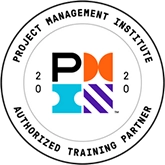The Case for Values Based Leadership: Maximizing People and Profitability
The late Milton Friedman, a long time economic advisor to American Presidents, stated: “the sole purpose of business is to maximize profit.” You may recall the movie, “Wall Street,” in which Michael Douglas speaks to a vast audience of shareholders, and proclaims, “The point is, ladies and gentlemen, that greed, for lack of better word is good. Greed works...and greed...will not only save companies, but that other malfunctioning corporation called the USA.”
late Milton Friedman, a long time economic advisor to American Presidents, stated: “the sole purpose of business is to maximize profit.” You may recall the movie, “Wall Street,” in which Michael Douglas speaks to a vast audience of shareholders, and proclaims, “The point is, ladies and gentlemen, that greed, for lack of better word is good. Greed works...and greed...will not only save companies, but that other malfunctioning corporation called the USA.”
The impact of this leadership paradigm is strikingly clear today. Today, we see 12 million Americans walking out of their homes, their savings gone, and retirement impossible. We are witness to a profound loss of hope, and a loss of belief and confidence in long standing leadership paradigms. As it turns out, greed, and its underlying “power-based model of leadership,” is not good for the people, or for leading countries or corporations.
Power vs. Values Based Model of Leadership
Leaders, all types of leaders, CEOs, Vice Presidents, Managers, Project Managers and people at all levels of a business have power, the power to influence people or events. That power, or energy, can be used wisely or misused, for good or for harm, for service to others, or for power over others. The present conditions in our world today are a “wake up call” to use power wisely, for the people and the planet.
 The power based model of leadership is based on “making people do things,” how to manipulate power to get what you want, how to win, the use of clever strategies. Power is an end itself and who gains more power vs. who accomplishes the most for the organization is the definition of success. The result we too frequently experience is conflict between power, people and groups. Not surprisingly, these same leaders call in “experts” to train their people in collaboration, conflict management, communication, handling stress and countless other programs designed to alleviate the very problems they have created. What the leaders are not honestly dealing with is that the people in the organization are only modeling the leadership behaviors they see and experience every day.
The power based model of leadership is based on “making people do things,” how to manipulate power to get what you want, how to win, the use of clever strategies. Power is an end itself and who gains more power vs. who accomplishes the most for the organization is the definition of success. The result we too frequently experience is conflict between power, people and groups. Not surprisingly, these same leaders call in “experts” to train their people in collaboration, conflict management, communication, handling stress and countless other programs designed to alleviate the very problems they have created. What the leaders are not honestly dealing with is that the people in the organization are only modeling the leadership behaviors they see and experience every day.
What is required today is a shift in our leadership paradigm, from a power based model of leadership to a values based or service model of leadership. Values based leadership is characterized by a commitment to be of service, to meet the needs of others. Such companies have clearly stated values that demonstrate that commitment. And these values are not just “post-it” note values, or some poster on a wall that people no longer really see, or “talk the talk, but not the walk.” Instead, the vision of the company is clear, compelling, and it inspires people to higher purpose. It is a picture of "how the world could be...let’s turn it to everyone›s› advantage.” The intention is on using power wisely by serving others, based on a clear vision and meaningful values—values that are visibly reflected in both the talk and the walk of the leaders in positional power. Power is a means, not an end; it is one tool to help people. Listening and coaching are the leaders› most important tools. Success is measured in how each of us has grown as people and how the organization has grown as a result. The results are cooperation and collaboration between power, people and groups, and the focus is on problem solving and creating opportunities to see results.
Values Based Leadership is leadership that has a moral basis, an intention to lead for the sake of others. Values Based leaders inspire hope in others. They encourage the imagination, resourcefulness and creativity that lies within each person. They help others help themselves, and equip others so that they can transform themselves into values based leaders.
Leadership is Influence
Pittacus, one of the Seven Sages of Fifth Century Greece, said “the measure of a man is what he does with power.” In history, and in all sectors, we see countless examples of values based leadership. Examples such as Martin Luther King, Ghandi, Mother Theresa, Jimmy Carter, Nelson Mandela easily come to mind but examples abound in all social, government and private sectors. What most characterizes values based leaders is their ability to unite people in a common vision of a better world; they provide a moral base for that vision, the intention to be of service to others. Stop and think of the leaders in your life, people who have influenced you to become your best and most creative self. Think of the values they “lived” and modeled for you, how they influenced and shaped your life.
Leadership is an influencing process. Any time you seek to influence the thinking, beliefs, or development of people in their personal or professional lives to unleash their power and potential so they can impact the greater good, you are taking on the role of a leader. You are continuously influencing others around you, your children, your family members, your colleagues and co-workers, your boss. And if you take a moment to reflect, your foundation for effective influencing is based on your personal values, beliefs that you hold, what is critical to being a person of worth, a person who uses power wisely, and for the benefit of others.
Bottom Line Results: Better Than Great
People want to feel connected to their companies, not only at the intellectual level but also at the emotional level. When a company’s vision is inspiring, seeks the greater good, and the leaders actively seek to connect others to that vision and demonstrate how shared values can guide every action, then a strong bond—a strong identity is formed&mdas;and people are motivated to give their best.
“All of this is very nice,” you might be thinking, ”but if it doesn’t get bottom-line results; it will never sell.” You’ll be pleased to know that there is a clear ROI for using power wisely, for values based leadership. Many companies are on the journey, increasingly so. American Express conducts feedback reviews on their leaders based on how they demonstrate the company’s values in their every day actions. Other companies have even transformed their leadership paradigm from “values based” into “servant led.” Southwest Airlines, Starbucks, Chick-fil-A, TD Industries, Men’s Warehouse, and Toro are examples of “servant led” companies that consistently produce positive bottom-line results. In fact, these companies outperform S&P 500 companies (10.3%) and Jim Collins’ “Good to Great” companies (17.5%). Their ROI is 24.2%.*
The term “Servant Leadership” was first coined by Robert Greenleaf, the director of management research, development and education at AT&T for thirty-eight years. Retiring in 1964, he founded the Center for Applied Ethics (now the ‘Robert K. Greenleaf Center’) to promote research and public understanding of leadership excellence. Greenleaf’s key message was: “the great leader is seen as servant first, and that simple fact is the key to his greatness.” By combining two seemingly contradictory terms, “servant” and “leader,” Greenleaf asks us to reconsider the very nature of leadership. Increasingly, this message is reaching American corporate leaders and is the foundation for changing their corporate culture.
The Leader Within You
“Anybody can be great because everyone can serve,” said Martin Luther King. So values based leadership is not about your formal position, or your place on the organizational chart. It is not limited to your job description, it is not a communication “style.” It is, however, a way of seeing, a way of putting on a special lens that helps you lead toward something, a vision of a positive future that inspires hope for a better world, and an intention to be aware and responsive to the needs of others. It is the contribution you make each day. A commitment to making a difference one action at a time, one person at a time. It is also a competency developed over time; it becomes part of who you are and is practiced throughout the life.
What You Can Do
- Read current and seminal books on values based or servant leadership. Learn whether it reflects your own beliefs and experience of what kind of leadership is required in today’s world.
- Seek to be a person of influence in your organization, wherever you are on the organizational chart.
- Identify your own values. Define how you seek to “live your values” in your everyday actions.
- Examine your organization’s vision and values. How closely are they “lived,” how are they used as guides in communications and decision making? One CEO said, “if it doesn’t fit with our vision and our values, it’s not the right decision.”
- Work in your sphere of influence, one to one, team, group, department. Encourage conversations about culture, leadership, vision and values. Build connection and alignment to a defined vision and set of values.
- Develop trusted relationships at the senior level of leadership. Seek to influence senior level conversations that re-visit, re-vitalize, or freshly create a commitment to a culture that inspires a vision for the greater good and that demonstrates its values in everyday action.
- Be willing to be an organizational “change agent” that helps build a coalition of other change agents, sponsored by the CEO, who will create a clear set of actions for strengthening your leadership culture.
About the Author:
Jeanne McGuire is a Senior Trainer and Consultant for Corporate Education Group. She has over 20 years of experience in the areas of organizational development consulting and training, and has lectured at Harvard University’s School of Social Planning, the National Vocational Center at Ohio State University, the University of Rome and other academic and corporate institutions on models of motivation and training for a diverse work force. She provides facilitation to executive teams in customer-focused change initiatives, and strategic planning and customized skill training programs in marketing, process improvements, customer service, management, team, and project development. Jeanne has designed 45 training programs and has directly trained more than 20,000 individuals. Clients characterize her as a “skilled and effective facilitator and presenter, and a creative training designer who understands processes and what needs to be achieved.”
* Source: The Business Case for Servant Leadership, 2009, Frick, et al.
For more information on this topic, as well as how Corporate Education Group can help power your organization’s performance, contact us via email or call 1.800.288.7246 (US only) or +1.978.649.8200. You can also use our Information Request Form!


